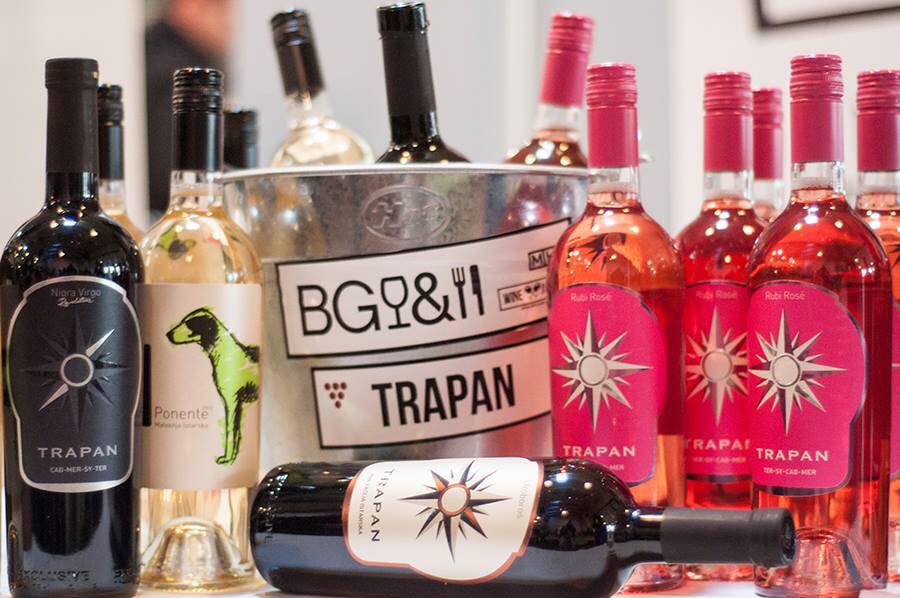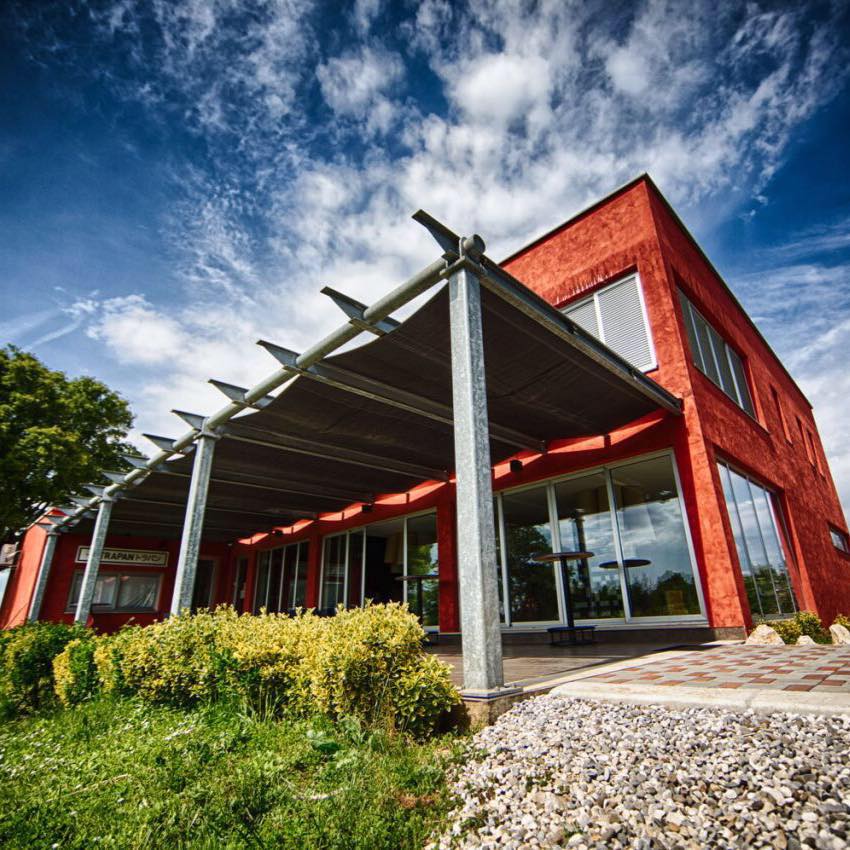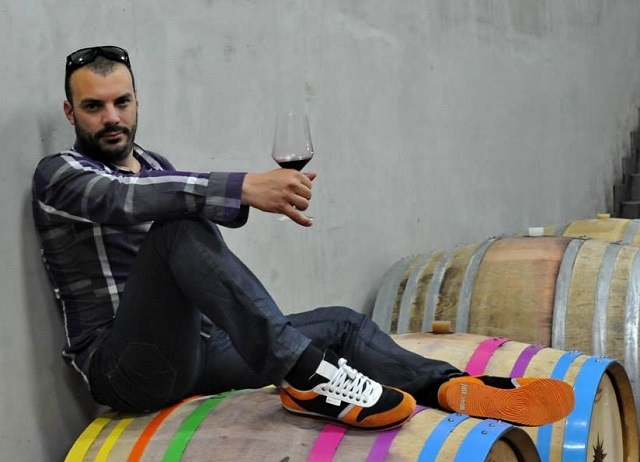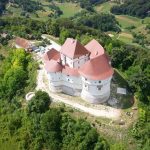We are very grateful to leading Croatian wine producer Bruno Trapan for supporting our Total Croatia Wine project, and agreeing to an interview on August 20, 2016.
Bruno Trapan began making wine only a decade ago and is already one of the most recognised winemakers of the region of Istria. He holds a bachelors in viticulture obtained in Istrian Poreč in a class of seven students, all of which are contributing to the latest generation of Istrian winemakers (Tercolo, Damijanić, Tikel, Cossetto, Gržinić and Kraljević – Cuj).
1. You have enjoyed spectacular success since you started making wine just a decade ago. Tell us a little about your wine-making philosophy.
My philosophy, if that’s what you’d like to call it, is to make wine with as little intervention as possible, near to the vineyard where the grapes grow. That is why our whole production is organic. The success of our winery has come against many odds, at least that’s what many thought, but I have been convinced that I had found good terroir where I could make the kind of wine that I’d like to drink and hoped that other people would come to like it too. As most of the winemakers of the region, we specialise in Malvasia and Teran.

2. You are among the most innovative wine promoters in the country, taking the message of your – and Croatian – wines internationally. Tell us how you started promoting your wines, and how you got to where you are today.
I get asked this question a lot, but like in most of the decision I make, there isn’t much contemplating about it, most of what I do and what many people then consider great promotion is plain intuition, a gut feeling. We very seldom pay for advertising, but we have worked and travelled a lot to get to where we are. I am sure that Ivica Matošević (one of the top Istrian winemakers and long-time President of Vinistra, the winemaker association of Istria) and I have travelled millions of kilometres by plane and car to any event which had anything to do with wine, be it in Croatia, Europe or Overseas. There has been no guarantee that any of the made kilometres would be fruitful in any way or at any time, but we had a passion to learn and to spread the word that there are some people producing extraordinary quality wines on a heart-shaped peninsula in Croatia called Istria. Sooner or later, they had to give in.
Another thing that wasn’t planned and just happened in the right time for us was social media, which has proven to be an excellent way to spread our message. Again, we didn’t plan for social media to become important for us, but it seems s that many people are drawn to what we do and to the way we do it. Many visitors that come to our winery to buy wine or for a tasting already feel as if they knew us.
3. Istria is often credited as being the gourmet capital of Croatia, and much more organised than the rest of the country. Are you happy with the way Istrian wine is being promoted, and what improvements would you like to see?
I can say that, regarding winemakers in Istria, most of us have been team players. We have organised ourselves in the Vinistra winemakers association and have supported each other as we were, and still are, aware that any single one of us is too small to prosper on his/her own and that we can only grow as a winemaking region by sticking together. We have all benefited from the enthusiasm of long-time president of the Association, Ivica Matošević and others. I am hoping this is going to continue.
Even though, compared to other regions, wine plays an important role in marketing the Istrian peninsula, I feel that many in tourism still don’t grasp how huge the potential of marketing Istria as a wine region truly is. This is one of the reasons I was so quick to answer your call for an interview. I am sure that a project as Total-Croatia-Wine.com can bring Istrian and Croatian wine closer to a broader audience and raise interest in our wine, and thereby also in our region and the country as a whole.

4. It is three years since Croatia joined the EU. Has this been good or bad for Croatia’s winemakers? On the one hand, a larger export market, on the other hand increased competition.
In many ways it has made doing business with member states much easier. It has also lowered the cost of sending smaller quantities of wine abroad. We don’t fear the competition, as none of us are competing with the lower priced imports and we welcome good and high quality wine imports, as they help to raise local wine culture to another level. I don’t think that the Croatian legislative has prepared well enough though, as a consequence foreign wine often has easier and cheaper access to the Croatian market than domestic producers. Overall, I see the three years as a very positive period.
*Bruno also aired his opinion on Slovenia claiming the right on Teran, the words he used to express said opinion can’t be published here. Let’s just say that he wonders how such nonsense could have been transformed into regulations.
5. You are one of the relatively few Croatian winemakers who export their wines internationally. What are the particular challenges Croatian winemakers face finding international markets?
Due to the fact that there are so many small winemakers that simply can’t invest as much as would be needed to get noticed on foreign markets, we should focus much more intensively on introducing our wines to the people visiting Istria and Croatia. They should be introduced to our wines and they will then also spread the news. As I pointed out earlier, Croatian tourism should emphasise more that Istria and Croatia are wine countries. Both, tourism and winemaking would benefit from that.

6. One of Croatia’s competitive advantages are its 130 indigenous grape varieties, and Istria in particular has done a great job promoting its indigenous varieties. You offer a combination of indigenous and international varieties. Tell us about that.
I was probably more open to experiment with grape varieties when I first started. Now I am also mostly focused on the indigenous grapes Malvasia and Teran, but I am still very glad for planting Syrah, as it blends with Teran into one of our best red wines we make, the “1”. During the past decade, winemakers in Istria have done wonders with Teran, while fresh Malvasia is almost perfect. Another reason for me turning to indigenous grapes is that even in the worst conditions during their growth, you can get good wine out of them.
7. And now a challenge to introduce Croatian wine to first time Croatian wine tasters. Give us six wines – three red and three white – which would in your opinion be representative of the best introduction to Croatian wine and its diversity.
Indeed a difficult task for a local winemaker. Here’s what I’ll do. I’ll name three “entry level” white and red wines respectively, but I’ll also name three of each for more hardcore wine lovers, if that’s ok.
“Entry-Level” Whites:
Malvasia, Coronica, 2015
Grk, Bire, 2015
Graševina, Galić, 2015
“Entry-Level” Reds:
Pinot Noir, Korak
Grand Teran, Coronica
La Sin, Bibich
“Hardcore” Whites:
Uroboros, Trapan, 2014
Rizling Amfora, Tomac
Pošip, Korta Katarina
“Hardcore” Reds:
Plava Grimalda, Matošević
Bas de Bas, Bibich
Brombonero, Clai, 2013
8. What is next for the dynamic team Trapan? Am sure your plans are anything but ordinary…
He-he, sorry, we don’t have any spectacular announcements regarding our winemaking for you. We’ll keep on doing what we are doing, with some small-level experiments perhaps.
The new things we are planning on doing are more tourism related. We plan on adding a few nice apartments to our winery, as well as a pool and to organise wine-tours throughout Istria. There are also plans for an eatery which would serve solid local meals for lunch and dinner. Combining wine and tourism is the winning ticket.
Information on where to purchase Trapan wines is available from the official website of the Trapan winery. When in Istria, you can visit the Trapan Winery in Šišan (address and map), near Pula, for a tasting and to purchase wine every day (except for Sundays and holidays) from 11am to 7pm.
Hear more from Bruno in this recent interview with Exotic Wine Travel.











